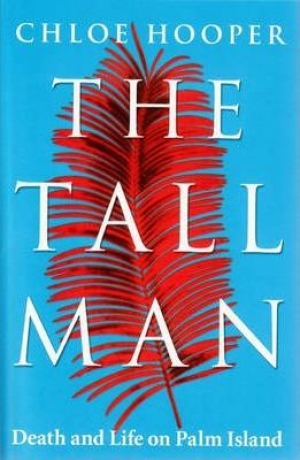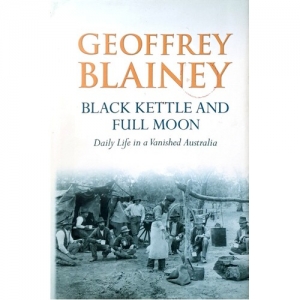Archive
Brian Dibble reviews 'The Newspaper of Claremont Street' by Elizabeth Jolley
Of Elizabeth Jolley’s first novel, Palomino (1980), Nancy Keesing said it ‘establishes Elizabeth Jolley as absolutely one of the best writers of fiction in this country’ (ABR, March 1981). Of The Newspaper of Claremont Street, Tom Shapcott said its ‘capacity to touch the very nerve centre of human fragility, of exposing the tragedy in human needs within the small comedy of existence, is something I have not seen done with such delicate balance and precision since the ‘Pnin’ stories of Vladimir Nabakov’ (Fremantle Arts Centre Broadsheet, January-February, 1982). Sally McInerney’s judgement of The Newspaper is that ‘this slight and disturbing novel sways between sociopolitical allegory (about work and nonhuman relations) and conventional storytelling, and the two elements work against each other’ (National Times, 17–23 January, 1982). I agree with Keesing and Shapcott, but can understand why McInerney might have come to her conclusion.
... (read more)D.J. O’Hearn reviews 'The Penguin Best Stories Of D’Arcy Niland' by D’Arcy Niland, selected with introduction by Ruth Park
There is a lot of work still to be done on the place of the yarn in our culture. Has its pre-eminence to do with the roving outback life, with traditions of taciturnity, with an inability to cope with the size of our land? Or has it more to do with the rapid urbanisation of this country and a need to celebrate and protect myths, an abiding sense of nostalgia? Or are there more pragmatic, economic reasons – the dearth of publishing houses, the lack of a landed gentry, the impossibility of survival as a full-time writer? Whatever the cause – and speculation is interesting – there can be little argument about the fact that the yarn has a central place in our literature, whether firmly embedded in a longer novel as in Such is Life and The Wort Papers, or staring at us from literary magazines or collections of short stories.
... (read more)Do not attempt to judge this book by its amazingly beautiful but iconographically confusing cover. A close-up photograph of a single leaf shows its veins and pores in tiny detail. The colours are the most pastel and tender of creamy greens. Superimposed over this lush and suggestively fertile image is the book’s one-word title: Drylands ...
... (read more)Joy Lawn reviews 'Fog a Dox' Bruce Pascoe, 'Figaro and Rumba and the Crocodile Cafe' Anna Fienberg, 'Definitely No Ducks!' Meg McKinlay, 'Violet Mackerel's Possible Friend' Anna Branford, 'Clementine Rose' Jacqueline Harvey
Animals and friends are a perennial subject in children’s literature, and the junior novels and series books reviewed here highlight those interests. Most of these titles, however, are also notable because they are told with humour, even whilst exposing the anxieties of children.
Fog a Dox (Magabala Books, $19.95 pb, 111 pp, 9781921248559) is a new novel for primary-aged children by esteemed Indigenous writer Bruce Pascoe. The intriguing title springs from fox cub Fog, one of three pups rescued by ‘tree feller’ Albert Cutts and reared by his dingo-cross dog, Brim. Fog’s vixen sisters leave when they are old enough to survive on their own, but Fog stays, balancing his fox instincts with learned dog behaviour; Albert describes him as a ‘dox’.
... (read more)Clement Semmler reviews 'Foreigners: A new collection of short stories' by David Martin
The novelist’s art is wide ranging; he is concerned with a multitude of things that comprise the fabric of his book. The short story writer, however, is concerned with one thing that implies many, since singularity and intensity are the essence of his art. The best short story writers depend on a marked personal attitude and this is the distinguishing characteristic of David Martin’s second collection of stories whose common denominator is his compassionate understanding of the problems of New Australians.
... (read more)John Hirst reviews ‘Black Kettle and Full Moon: Daily life in a vanished Australia’ by Geoffrey Blainey
Geoffrey Blainey is seventy-three years old and has published thirty-two books. Since his last book was a history of the world, one might have assumed that he had reached the end of his career. But he is not done yet. He moves, as he has always done, from grand speculation to what might be thought trifles – in this case, the details of everyday life in Australia from the 1850s to 1914.
... (read more)'A curious night at the Wheeler Centre' by Judith Armstrong
The Wheeler Centre recently hosted ‘four provocative nights’ based on the assertion that Australian criticism of film, theatre, books and the visual arts is, in its own words, ‘failing us all’. The series was entitled ‘Critical Failure’. For ABR readers unable to attend, here is one person’s account of the books-related panel.
... (read more)Donata Carrazza reviews 'Two Greeks' by John Charalambous
What does a young boy make of a father who carries in his pocket a knife that is used to peel fruit, behead chickens, fashion toy flutes, and potentially serves as a weapon to kill his spouse? Two Greeks,the work of third-time novelist John Charalambous, is an engaging study of the power of family and the need for identity. In similar company to Raimond Gaita’s Romulus, My Father and Christos Tsiolkas’s The Slap, the novel delves into difficult emotional territory, but does so with humour and humanity. Like its literary cousins, it has the foundations for an insightful filmic adaptation.
... (read more)Richard Broinowski reviews 'The Korean War: Australia in the Giant’s Playground' by Cameron Forbes
To go on thinking of the Korean War as a ‘forgotten’ war in a ‘hermit’ country, as we too often do, ignores the many authoritative accounts of it. Cameron Forbes’s new book is the latest.
... (read more)








